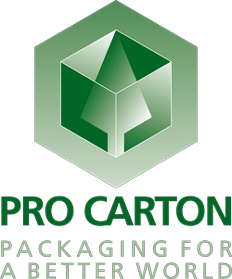Cartons: a perfect example of the Circular Economy
5 September 2014
The concept of the Circular Economy is to optimise the use of natural resources by encouraging recycling, eco-design and waste prevention, among other measures. The paper industry, including cartonboard packaging, is at the forefront of putting these aims into practice.
In early July, the European Commission published “Towards a Circular Economy: a zero waste programme for Europe”. It explains that since the industrial revolution, waste has constantly grown. This is because our economies have used a “take-make-consume -dispose” pattern of growth – a linear model which assumes that resources are abundant, available and cheap to dispose of. We recognise today, that resources needed to be husbanded and this means re-using, repairing, refurbishing and recycling existing materials and products. What used to be regarded as ‘waste’ can be turned into a resource and all resources need to be managed more efficiently throughout their life cycle.
This initiative accords admirably with the current actions of the paper based industry whose products including cartons, are easily recyclable and made from a naturally renewable resource.
Paper can be recycled up to six or seven times in theory, with an average rate of 5 times. Over 50% of the raw material for Europe’s pulp and paper industry is from paper for recycling (the rest is from wood fibres) and almost 58 million tonnes of paper are recycled within Europe. In 2012, 71.7% of paper which was used in Europe, was recycled which means that Europe is the global paper recycling champion. Also, paper packaging including cartons, is the most recycled packaging material in Europe at 81.3%. (source: European Recovered Paper Council).
Good recyclability depends on good eco-design of paper and board products and auxiliary materials. For example: Ink manufacturers are increasingly using renewable and recyclable resources such as soy, vegetable oil and starch. They are also helping printers to recover and recycle inks and solvents. Eco-design aims to reinforce the recyclability of cartonboard packaging, and leads to environmental benefits including optimising the use of resources and reducing waste and unrecyclable components.
Cartonboard cannot be recycled indefinitely as fibres eventually get too short and worn out to be useful. The cycle must therefore be constantly replenished with new virgin fibres. New virgin fibres in Europe for cartonboard packaging come from wood from sustainably managed forests. Not only are these forests a renewable resource, but new growth exceeds the wood harvested by an area equivalent to 1.5 million football pitches per annum. (source: Confederation of European Paper Industries) To achieve this, European forest owners and operators follow a combination of national, European and international regulations. In addition, they can prove forests are sustainably managed through Forest Certification Schemes, such as FSC® and PEFC™.
The European Commission believes that moving towards a more circular economy is essential to deliver the resource efficiency agenda established under the Europe 2020 Strategy for smart, sustainable and inclusive growth. The life cycle of cartonboard packaging shows that it is at the core of a circular economy, as it is an industry that recycles, using “waste” as a resource and also uses new fibres from renewable, sustainably managed forests to continue the loop.
For further information please click on “Cartons and Sustainability” at www.procarton.com




